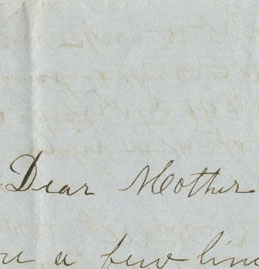
In Their Own Words: Slave Narratives
![]()
For many slaves, the ability to read and write meant freedom—if
not actual, physical freedom, then intellectual freedom—to maintain
relationships amongst family members separated by the slave trade. A few
wrote slave narratives, which, when published, powerfully exposed the
evils of slavery. For slaves and their teachers, the exercise of reading
and writing was a dangerous and illegal one. In most southern states,
anyone caught teaching a slave to read would be fined, imprisoned, or
whipped. The slaves themselves often suffered severe punishment for the
crime of literacy, from savage beatings to the amputation of fingers and
toes.
Although some masters did teach their slaves to read as a way to Christianize them, most slave owners believed that teaching such skills was useless, if not dangerous. They assumed that slaves had no use for reading in their daily lives, and that literacy would make them more difficult to control, and more likely to run away.
For those who managed to become literate and escape to freedom, the ability to write would spark the growth of a powerful genre of literature: the slave narrative. For the abolitionist movement, slave narratives would become tremendously effective weapons in attacking the institution of slavery. Despite the danger of physical punishment and the threat of capture for the authors of slave narratives, these men and women took great risks to empower themselves, and in some cases, achieved freedom.
![]()
| |
| |
| |
| |
| |
| |
| |
| |
| |
| |
| |
| |

Copyright
© 2002 Division of Rare & Manuscript
Collections
2B Carl A. Kroch Library, Cornell University, Ithaca, NY, 14853
Phone Number: (607) 255-3530. Fax Number: (607) 255-9524
For
reference questions, send mail to:
rareref@cornell.edu
For questions or comments about the site, send mail to: webmaster.